![]()
![]()
![]()
Use LEFT and RIGHT arrow keys to navigate between flashcards;
Use UP and DOWN arrow keys to flip the card;
H to show hint;
A reads text to speech;
19 Cards in this Set
- Front
- Back
- 3rd side (hint)
|
Allegory:
|
An allegory is a kind of extended metaphor (a metaphor that weaves
throughout the poem) in which objects, persons, and actions stand for another meaning. |
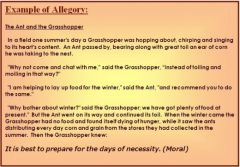
|
|
|
Alliteration:
|
Alliteration happens when words that begin with the same sound are
placed close to one another. For example, “the silly snake silently slinked by” is a form of alliteration. Try saying that ten times fast. |
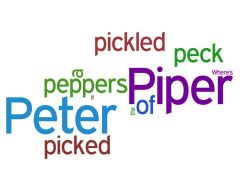
|
|
|
Allusion:
|
An allusion happens when a speaker or character makes a brief and
casual reference to a famous historical or literary figure or event. |

|
|
|
End Rhyme:
|
the rhyming words occur at the ends of lines of poetry.
|
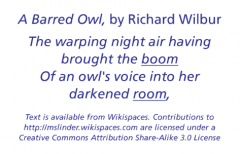
|
|
|
Hyperbole:
|
A hyperbole is a gross exaggeration. For example, “tons of money” is
a hyperbole. |
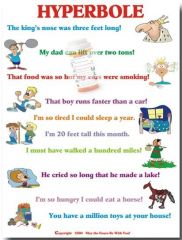
|
|
|
Identical Rhyme:
|
Two words are spelled differently but have the same
pronunciation (homonyms), such as “two” and “too” or “there” and “their” |
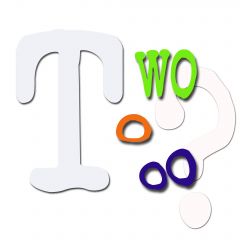
|
|
|
Imagery:
|
Imagery is intense, descriptive language in a poem that helps to trigger
our senses and our memories when we read it. |

|
|
|
Internal Rhyme:
|
the rhyme occurs inside a line, such as “Let’s BEAT the HEAT.”
|

|
|
|
Irony:
|
Irony involves saying one thing while really meaning another, contradictory
thing. |
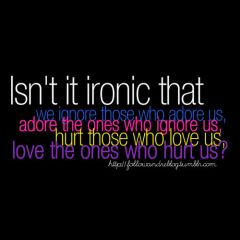
|
|
|
Meter:
|
the number of feet in a line of poetry.
|
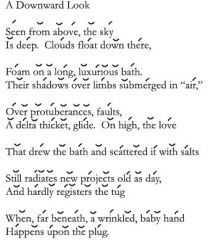
|
|
|
Metaphor:
|
A metaphor happens when one thing is described as being another
thing. “You’re a toad!” is a metaphor—although not a very nice one. Metaphor is different from simile because it leaves out the words “like” or “as.” For example, a simile would be, “You’re like a toad.” |
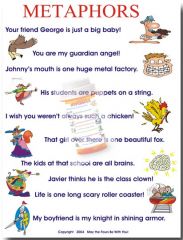
|
|
|
Rhyme:
|
happens when two words end with the same sound.
|
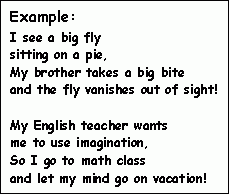
|
|
|
Rhyme Scheme:
|
the pattern of rhyming lines in a poem. (For example, aabbccdd
or ababcdcd) |
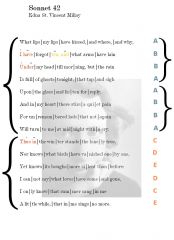
|
|
|
Sight Rhyme:
|
Two words look alike but don’t sound alike, such as “Love” and
“Jove” or “Daughter” and “Laughter.” |
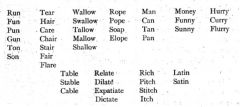
|
|
|
Simile:
|
Similes compare one thing directly to another. For example, “My love is
like a burning flame” is a simile. You can quickly identify similes when you see the words “like” or “as” used, as in “x is like y.” Similes are different from metaphors—for example, a metaphor would refer to the “burning flame of my love.” |

|
|
|
Slant Rhyme:
|
Two words are nearly rhymed but slightly different, such as “Lake”
and “Fate”. |
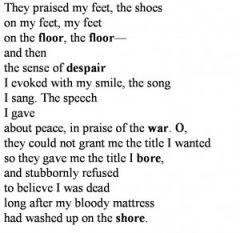
|
|
|
Stanza:
|
A stanza is a group of two or more lines that form a unit in a poem. A
stanza is comparable to a paragraph in a prose. Each stanza may have the same number of lines, or the number of lines may vary. |
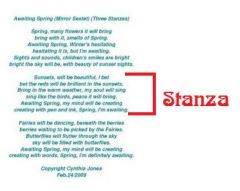
|
|
|
Symbol:
|
Generally speaking, a symbol is a sign representing something other
than itself. |

|
|
|
Symbolism:
|
when the author uses an object or reference to add deeper meaning
to a story. Symbolism can be subtle or obvious, used sparingly or heavy-handedly. |

|

